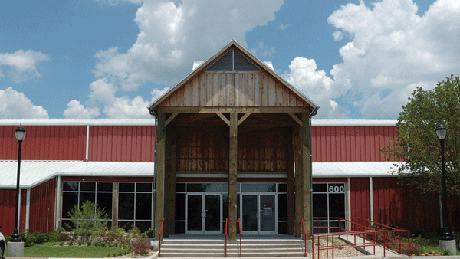I opened the latest issue of Texas Highways and discovered a pleasant surprise. On page 18 was a photograph I quickly recognized. It was the lonely G.I. writing a letter home to his wife and daughter. The one that is so touching at the Audie Murphy/American Cotton Museum here in Greenville. No matter how many times I see the display, my eyes tear up.
When I walk through the World War I bunker, I wonder how those men survived trench warfare. My other favorite is the back porch of the tenant farmer’s home. The exhibits in the museum are so realistic, so well done.
It seems that Paul McDonnold feels the same way. His article invites travelers to stop by and have a look at Hunt County since 1880 when the first train arrived to haul bales of cotton off the markets worldwide. He carefully weaves the story of cotton with our hometown hero, Audie Murphy.
I visited with Director Susan Lanning after I read the article. Susan was ecstatic, to say the least. What was so exciting was that Mr. McDonnold found the museum on his own without the usual PR publicity. That was very positive for the museum.
Susan showed me the museum’s latest pride and joy. Between the bank vault and the back porch, they managed to fit in a gorgeous buggy recently donated after a thorough renovation. This is a big, a very big buggy. It took a tall, strong horse to pull it. However, I can see that horse trotting down the dirt trail, his head held high, taking the lady of the home to visit a neighbor or a country doctor to deliver a baby.
As an aside, one of my great-grandfathers was such a country doctor who often took my grandmother with him in his buggy when going on a call.
A second new exhibit is in the works at the Audie Murphy/American Cotton Museum. They are building a blacksmith’s shed. We tend to think of blacksmiths and farriers as those who shoe a horse or mule. That’s primarily what a farrier does in addition to specializing in equine hoof care. The blacksmith on the other hand was much more versatile.
The local blacksmith was the go to person who made and repaired anything made of iron or steel. In 19th century America, blacksmiths were almost always men. They made plows, axes, shovels, lighting devises, door hinges, logging chains, harness hardware, iron tires for wagons, and hardware to build wagons, homes and barns. Then when their product broke, they fixed it. He was one of the busiest and most important people in a community.
As automobiles replaced wagons and horses, most blacksmiths evolved into mechanics. They learned how to work on cars, bicycles, and even airplanes. In my Civil War research, I found the local blacksmith was adept at repairing old rifles, muskets, and other firearms. Here on the frontier in Texas, those weapons were vital.
The next time you are looking for something to do or to entertain visitors, go to the Audie Murphy/American Cotton Museum. The early 20th century merchants of Hunt County are still waiting for you. Now you can look at the buggy. Have you seen the actual, life-size bale of cotton? It’s very impressive. Hopefully by summer, you can visit the blacksmith’s shed. Located at 600 I-30 Frontage Road, Greenville. Hours are 10 AM to 5 PM Tuesday through Saturday, closed Sunday and Monday.

